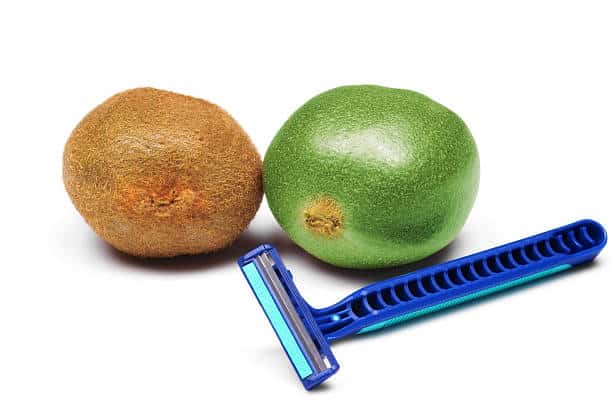Understanding the nuances of sandpaper grades is like unlocking the secrets to achieving a flawless finish in your woodworking or DIY projects. From coarse to fine, each grit plays a unique role in shaping surfaces and refining details.
In this guide, we’ll cover how grades of sandpaper grit differ from each other!
Table of contents
- How Do Grades Of Sandpaper Grit Differ?
- How To Choose The Right Grit In Sanding?
- Why Do Grades Of Sandpaper Grit Differ?
- Does Sandpaper Grit Affect The Speed And Quality Of Sanding?
- What’s The Difference Between Fine And Coarse Sandpaper Grit
- Frequently Asked Questions
- Conclusions
- References
- Recommendations
How Do Grades Of Sandpaper Grit Differ?

Sandpaper grit grades differ based on the size of abrasive particles embedded in the paper. Lower grits have larger particles, making them coarse for initial material removal. As you progress to higher grits, the particles become finer, refining surfaces with increased smoothness. The grading system ranges from coarse (lower numbers) to fine (higher numbers), each serving a specific purpose in the sanding process.
How To Choose The Right Grit In Sanding?
Choosing the right grit in sanding depends on your project’s needs. Start with a coarse grit (lower number) for material removal, then progress to finer grits for smoothing.
For heavy-duty tasks, like stripping paint or leveling surfaces, opt for lower grits (40-80). Medium grits (100-150) are versatile for general sanding, while higher grits (180-320) are ideal for finishing. Tailor your choice to the material and desired finish, gradually transitioning from coarse to fine grits for optimal results.
Why Do Grades Of Sandpaper Grit Differ?
The grades of sandpaper grit differ to accommodate various stages of the sanding process. Coarser grits (lower numbers) are designed for initial material removal, efficiently tackling rough surfaces.
As you progress to finer grits (higher numbers), the abrasive particles become smaller, enabling precision and a smoother finish. This gradation allows for a systematic approach, ensuring efficient and effective sanding across different projects and materials.
Does Sandpaper Grit Affect The Speed And Quality Of Sanding?
Sandpaper grit significantly influences both the speed and quality of sanding. Coarser grits (lower numbers) remove material quickly but may leave rougher surfaces. Finer grits (higher numbers) smooth out imperfections, enhancing the quality, but the process takes more time. Choosing the appropriate grit for each stage ensures efficient material removal and a polished finish, balancing speed with the desired level of refinement in your sanding project.
What’s The Difference Between Fine And Coarse Sandpaper Grit
:max_bytes(150000):strip_icc()/sanding-block-and-sandpaper-71516651-57ccf0a75f9b5829f47f9e37.jpg)
The main difference between fine and coarse sandpaper grit lies in the size of the abrasive particles. Coarse grits (lower numbers) have larger particles, making them effective for initial material removal and smoothing rough surfaces. On the other hand, fine grits (higher numbers) feature smaller particles, ideal for refining and achieving a smoother finish. Essentially, the choice between fine and coarse grit depends on the specific stage and requirements of your sanding project.
Frequently Asked Questions
The grit number on the sandpaper indicates the size of the abrasive particles embedded in the paper. Lower grits (e.g., 40) have larger particles, suitable for coarse sanding, while higher grits (e.g., 220) feature finer particles for smoother finishes.
Choose a coarse grit (lower number) for initial material removal, then progress to finer grits for smoothing. Consider the material, project type, and desired finish. Start with coarse grits (40-80) and move towards finer grits (180-320) as needed.
While high grits (e.g., 400 and above) provide a smooth finish, they’re not efficient for material removal. Begin with a coarse grit for heavy tasks and progressively move to higher grits for refinement.
Wet sandpaper can be used with water for lubrication, reducing heat and preventing clogging. Dry sandpaper is suitable for projects without water and is commonly used for woodworking.
The lifespan of sandpaper depends on factors like grit size, material being sanded, and technique. Generally, coarse grits wear out faster than finer grits. Rotate or replace sandpaper as it becomes worn or clogged.
While some sandpaper can be reused by cleaning or tapping off debris, it’s generally more effective to use fresh sandpaper for optimal results, especially for finer grits used in finishing.
Conclusions
From the rugged efficiency of coarse grits to the refined smoothness of fine ones, each grade plays a crucial role. The art of sanding lies in understanding when to transition between these grits, tailoring your approach to the specific needs of your material and the desired outcome. sanding!
References
- thespruce.com – How to Choose Sandpaper Grit
- toolstop.co.uk – Sandpaper Grits Explained
- home.howstuffworks.com – How Do Grades of Sandpaper Grit Differ?
Recommendations
- How Big is 10 Acres of Land? (Visual Examples for Comparison)
- How Many Months is 60 Days? (Explaining the Calculation Process)
- How Big is 5 Inches? 6 Items with Accurate Measurement
- How Long Are Menards Rebates Good For?
- How Tall Is All Might? Everything To Know About Hero Academia
- How Tall is Kevin Gates? Everything about the Rapper
- How Long Are HS Football Games? (Explained)
- How Tall is Trippie Redd? Everything About the Rapper





